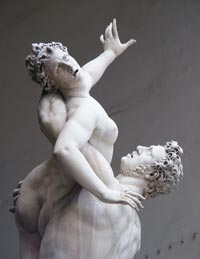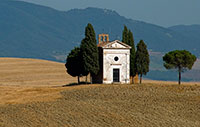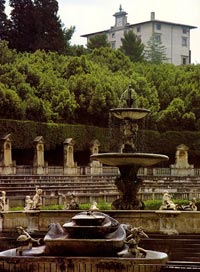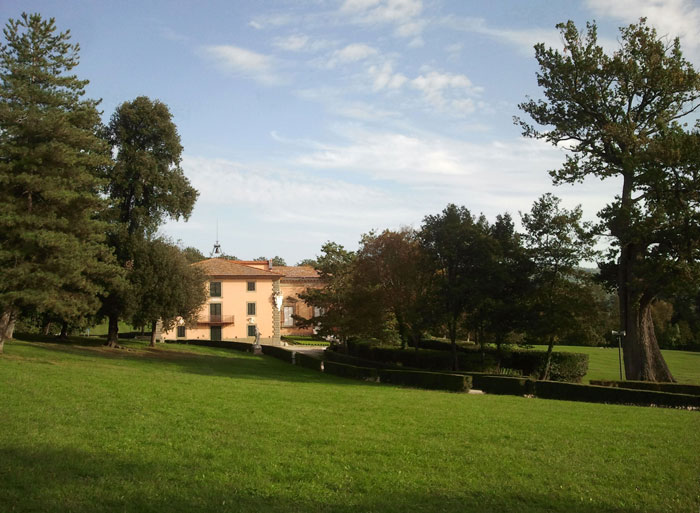 |
|
Parco Villa Demidoff, the villa and the old oak tree, the farnia di Villa Demidoff |
Villa di Pratolino | Parco Villa Demidoff |
The Villa di Pratolino was a Renaissance patrician villa in Vaglia, Tuscany, Italy. It was mostly demolished in 1820: its remains are now part of Villa Demidoff, 12 km north of Florence, reached from the main road to Bologna. |
||
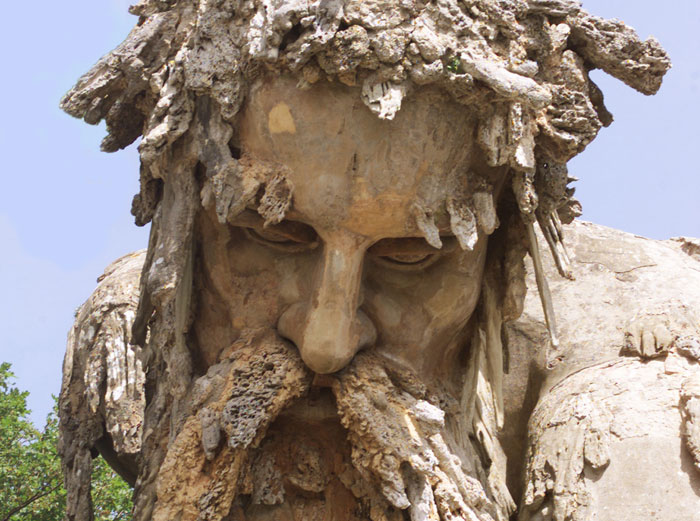 |
||
Il Colosso dell'Appennino (“The Apennine Colossus”), detail |
||
| Though the villa and its fountains were kept in repair, after Francesco's death it was deserted; in the eighteenth century some of its sculptures were removed to adorn the extension of the Boboli Gardens, and the place was left to fall into decay; by 1798 a German visitor was impressed with the romantic ruin of it.[4] Grand Duke Ferdinand III decided to capitalize on the air of overgrown wildness; in 1820 it was decided to demolish the villa, and the garden was then re-designed in the English landscape manner and became one of the most romantic gardens ever seen in Tuscany. In 1872 the complex was sold by the heirs of Leopold II, former Grand Duke of Tuscany, to Prince Pavel Pavlovich Demidov who restored the Paggeria, or pages' lodgings of the former residence, as the Villa Demidoff di Pratolino. The property was eventually inherited by Prince Paul of Yugoslavia. Later the park was bought by the province of Florence who maintain the park and open it for public use from May until September. The complicated iconography of the garden is embodied in the brooding statue of "Appennino" (1579-1580), a colossal sculpture by Giambologna, which originally seemed to emerge from the vaulted rockwork niche that once surrounded him. Multiple grottoes with water-driven automata, a water organ, surprise jets that drenched visitors' finery when the fontanieri opened secret spigots, offered striking juxtapositions of Art with imitations of rugged Nature.[5] The Park of Pratolino hosts many century-old and valuable trees such as oaks, English oaks, cedars and conker trees. |
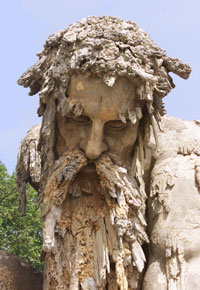 |
|
|
||
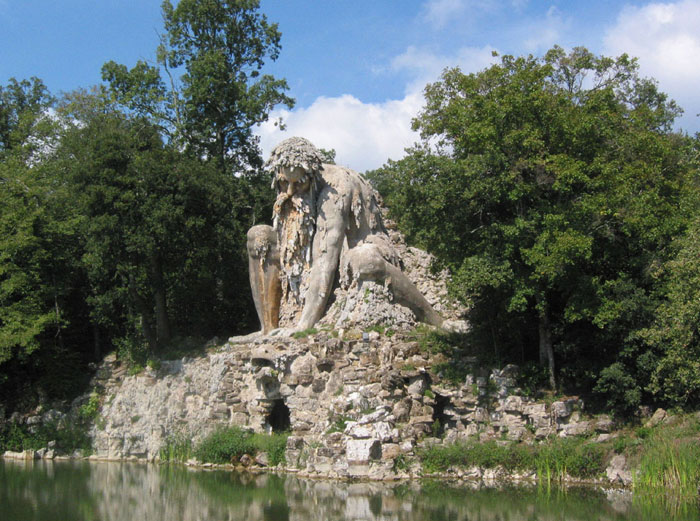 |
||
Giambologna, sculpture of Appennino, Il Colosso dell'Appennino, |
||
| Giambologna's largest work - the 33-foot high figure of the mountain god Appennino (1577-81). Made from brick and stone, the god crouches above a pond and appears to have emerged from the earth. |
||
| Giardino degli Orti Oricellari |
||
| Purchased by Bianca Cappello in 1573, the Garden was restored its original beauty, becoming a place of delights and leisure, abounding in entertainment and games organised by the grand duke and duchess for their guests. In the mid 17th century, cardinal Giovan Carlo de’ Medici became the promoter of the first major series of works, creating an Italian-style garden. Inspired by the work of Bernardo Buontalenti at Pratolino, it was planned to convey water from Boboli to the garden, exploiting the channelling system along the via Maggio and Ponte Santa Trinita, in order to supply the fountains designed by sculptor Antonio Novelli. The most grandiose of the fountains is the square-plan fountain portraying Polyphemus drinking from a water-bag, made of plastered masonry with an iron framework, the same technique used by Giambologna for the statue of the Apennines at Pratolino. In 1640, the property once again passed into Medici hands as a result of a complex inheritance situation. The first main transformation of the garden dates back to the mid-17th century, when Buontalenti introduced new water displays and giant statues. Here, as in Villa Pratolino though on a smaller scale, the atmosphere is Arcadian, and takes its inspiration from classical mythology. Gardens in Tuscany | Oricellari Gardens |
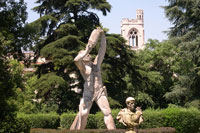 Polyphemus drinking from a wineskin, sculpted by Antonio Novelli Polyphemus drinking from a wineskin, sculpted by Antonio Novelli |
|
Villa di Pratolino | Parco Villa Demidoff |
||||
| Transport: a 20 minute bus ride on 25 from San Marco Michel de Montaigne, Travel Journal (1580–1581). Transl. Donald M. Frame. San Francisco: North Point Press, 1983. Villa Medici, Pratolino | 'It was to rival this place that Pratolino was built. As to the richness and beauty of the grottoes, Florence is infinitely superior; as to abundance of water, Ferrara; in variety of sports and amusing mechanisms derived from water, they are equal, unless the Florentine has a little more elegance in the arrangement and order of the whole body of the place; Ferrara excels in ancient statues, and in the palace, Florence. In situation and beauty of prospect Ferrara is infinitely superior; and I should say the same in all nature’s favors, if it did not have this extreme misfortune, that all its waters, except the fountain that is in the little garden all the way at the top, and which is seen in one of the palace rooms, is only water from the Teverone, a branch of which the cardinal has taken over and diverted to a separate channel for his service. If this water were as clear and good to drink as on the contrary it is muddy, this place would be incomparable, especially its great fountain, which is of the finest workmanship, and more beautiful to see with its adjuncts than anything else either in this garden or elsewhere. At Pratolino, on the contrary, what water there is is spring water and drawn from far away. Because the Teverone comes down from much higher mountains, the inhabitants of this place use it as they will, and the example of several private individuals makes this work of the cardinal’s less marvelous.' (p. 100) |
||||
[1] Most of the factual information in this article is derived from Webster Smith, "Pratolino" The Journal of the Society of Architectural Historians 20.4 (December 1961), pp. 155-168; Smith derived his documentary information from the Florentine State Archives. [2] Montaigne, Journal de voyage en Italie par la Suisse et l'Allemagne en en 1580 et 1581. [3] Vieri, Delle marauigliose opere di Pratolino; Vieri had the cooperation of Buontalenti and his son Francesco Buontalenti in setting out the plans on paper. [4] Ernst Moritz Arndt, noted in Smith 1961:166. |
||||
| [5] Giambologna, born as Jean Boulogne, incorrectly known as Giovanni da Bologna and Giovanni Bologna (1529 – 13 August 1608), was a sculptor, known for his marble and bronze statuary in a late Renaissance or Mannerist style. Giambologna was born in Douai, Flanders (now in France). After youthful studies in Antwerp with the architect-sculptor Jacques du Broeucq, he moved to Italy in 1550, and studied in Rome. Giambologna made detailed study of the sculpture of classical antiquity. He was also much influenced by Michelangelo, but developed his own Mannerist style, with perhaps less emphasis on emotion and more emphasis on refined surfaces, cool elegance and beauty. Pope Pius IV gave Giambologna his first major commission, the colossal bronze Neptune and subsidiary figures for the Fountain of Neptune (the base designed by Tommaso Laureti, 1566) in Bologna. Giambologna spent his most productive years in Florence, where he had settled in 1553. Ten years later, he was named a member (Accademico) of the prestigious Accademia delle Arti del Disegno, just founded by the Duke Cosimo I de' Medici, at 13 January 1563, under the influence of the painter-architect Giorgio Vasari, becoming also one of the Medici most important court sculptors. He died in Florence at the age of 79 - the Medici had never allowed him to leave Florence, as they rightly feared that either the Austrian or Spanish Habsburgs would entice him into permanent employment. He was interred in a chapel he designed himself in the Santissima Annunziata. Giambologna became well known for a fine sense of action and movement, and a refined, differentiated surface finish. Among his most famous works are the Mercury (of which he did four versions), poised on one foot, supported by a zephyr. The god raises one arm to point heavenwards, in a gesture borrowed from the repertory of classical rhetoric that is characteristic of Giambologna's maniera. Giambologna's several depictions of Venus established a canon of proportions and set models for the goddess's representation that were influential for two generations of sculptors, in Italy and in the North. He created allegories strongly promoting Medicean political propaganda, such as Florence defeating Pisa and, less overtly, Samson Slaying a Philistine, for Francesco de' Medici (1562). He delighted in solving the complex spatial problems of three intertwined figures in his famous Rape of the Sabine Women (1574–82). The subject was not finally determined until after it had been set up in the Loggia dei Lanzi in Florence's Piazza della Signoria. Heracles beating the Centaur Nessus (1599) is also a conscious tour de force.[4] It is also in the Loggia dei Lanzi. The equestrian statue of Cosimo I de' Medici also in Florence, was completed by his studio assistant Pietro Tacca. Giambologna provided as well as many sculptures for garden grottos and fountains in the Boboli Gardens of Florence and at Pratolino, and the bronze doors of the cathedral of Pisa. For the grotto of the Villa Medicea of Castello he sculpted a series of studies of individual animals, from life, which may now be viewed at the Bargello. Small bronze reductions of many of his sculptures were prized by connoisseurs at the time and ever since, for Giambologna's reputation has never suffered eclipse. Giambologna was an important influence on later sculptors through his pupils Adriaen de Vries and Pietro Francavilla who left his atelier for Paris in 1601, as well as Pierre Puget who spread Giambologna's influence throughout Northern Europe, and in Italy on Pietro Tacca, who assumed Giambologna's workshop in Florence, and in Rome on Gian Lorenzo Bernini and Alessandro Algardi. |
||||
| This article incorporates material from the Wikipedia articles Villa di Pratolino and Giambologna published under the GNU Free Documentation License. Wikimedia Commons has media related to Giambologna. |
||||
|
||||
|
||||
Podere Santa Pia |
Podere Santa Pia, view from the garden on the valley below |
Capella Vialetta, near Pienza |
||
Choosing one of the Florence walking tours you'll be able to visit the world-famous museums of the Uffizi and Accademia Galleries, discovering the main historical and artistic treasures of the city. 2 | Quarter Duomo and Signoria Square 3 | Around Piazza della Repubblica 5 | San Niccolo Neighbourhood in Oltrarno 6 | Walking in the Bargello Neighbourhood 7 | From Fiesole to Settignano
|
||||
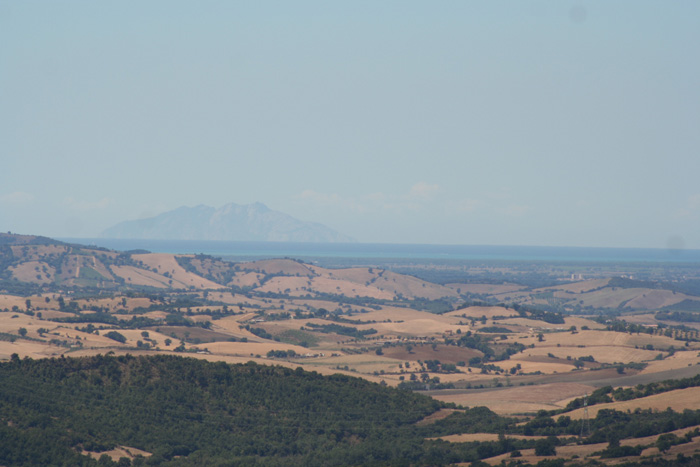 Podere Santa Pia is set high up in the Maremma hills with sweeping views of Tuscany |
||||

